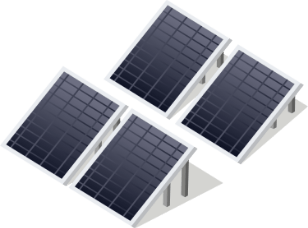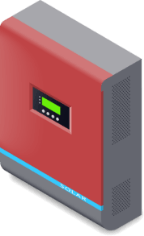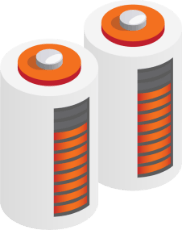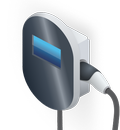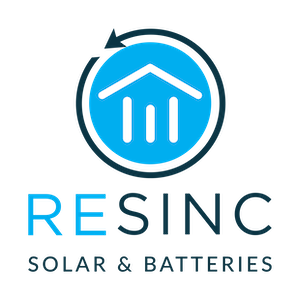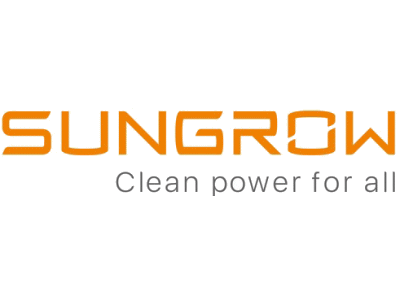LONGi is one of the world's largest solar panel manufacturers. For a while they were the largest, but it looks like Jinko has them beat at the moment, but they still managed to hold the number one position for a very Longi time.
The Chinese company became a solar giant by producing panels with a good combination of affordability and reliability. Their panels come with 12, 15, or 25 year product warranties and 25 year performance warranties. Almost all going on Australian roofs have 25 year produce and performance warranties.
Because they're reliable and good value for money, LONGi panels are among those SolarQuotes recommends. I'd be fine with having them installed on my mother's roof. In fact, our blogger, Anthony, did put them on his mum's roof.
Company History
LONGi Solar was founded in 2000. It may be hard to believe, but the company wasn't named after Australian solar legend Jack "Longy" Long. Instead, it was named after Jiang Longji, a university president who died in 1966. The name choice makes it look like the young company was trying to curry favour with the Chinese government, but LONGi's founders insist it was just because he was a really cool dude.
Initially, LONGi produced silicon for electronics. In 2005, they began producing silicon for solar, and in 2006, they had enough capacity to make around 1,000 tonnes a year. They then began climbing their way up the solar supply chain, starting with cutting the silicon ingots they made into wafers used for solar cells. In 2014 they purchased a solar panel manufacturing company. This completed their transformation into an enormous, vertically integrated company, involved in all major steps of solar panel production. They have continued expanding at a rapid rate and, in 2021, also moved into producing equipment for hydrogen production.
Production
In 2023 LONGi shipped a massive 67.5 gigawatts of solar panels. That's enough to generate electrical consumption equal to half of Australia's electricity consumption. Not bad for a single company. Their figure for 2024 is likely to be similar. This will make it one of the few years there hasn't been a large increase in their panel production.
Longi silicon wafer production in 2023 was 125.4GW. This is much more than is required for their own use and the excess is sold to other companies. At the moment, it looks like their 2024 wafer production may be lower, but final figures aren't yet in.
Monosilicon Only
Two types of silicon are used to make solar cell -- polysilicon and monosilicon. LONGi only makes and uses monosilicon. While more expensive than polysilicon, its makes for more efficient solar cells and has been gradually gaining market share. Almost 100% of panels going on Australian roofs these days are monosilicon.
Production Locations
LONGi's headquarters are in Xi'an, a city of 13 million that's famous for flatbread in lamb soup and terracotta dudes. It's located in Shaanxi province, which has goddamned beautiful mountains that often can't be seen because of goddamn awful air pollution. The bulk of LONGi's silicon production occurs in this province.
Most of LONGi's production is in China but they also have factories in Malaysia and Vietnam. For years now they've been talking about opening facilities in India, but that project has been really slow to get off the ground. They've also built a $900 million plant in Ohio in the United States, able to produce up to 5 gigawatts of panels a year.
LONGi Hi-Mo X6 Panels
Longi panels used for residential solar are most likely to be their Hi-Mo X6 panels. These come in three slightly different versions called Explorer, Scientist, and Guardian panels. All have fairly high efficiency and performance warranties that promise a low rate of degradation.
If you want to check out panel information on the Longi website, make sure the page is set to Australia, because they don't offer the same panels or the same warranties in every country. The last time I used their site, it thought Adelaide was in India.
Efficiency
Solar panel efficiency is the percentage of sunlight energy they convert into electrical energy. All else equal, the higher the panel efficiency, the more energy they'll generate for a given amount of roof space. Currently, I'm happy panels over 22% high efficiency. As the Hi-Mo X6 panels offered in Australia have efficiencies that range from 21.3% to 23.3%, many of them count as high efficiency panels.
Heat Tolerance
As solar panels get hotter, their output declines. For typical modern panels it will drop by around 0.29% for 1°C the panel goes over 25 degrees. So a panel at 45°C would produce 5.8% less power than it would at 25°C. The Longi Hi-Mo X6 panels available in Australia fall by 0.28% to 0.29%. This makes some of them a little better than average.
Hail Resistance
Longi Hi-Mo X6 panels are certified to resist 25mm hail striking the panel at 23m/s. This means the panel can withstand multiple impacts without suffering more than a 5% decline in output. This level of resistance is standard and sufficient for panels to survive impacts from normal sized hailstones.
Avoid Shading
Their installation manual for HiMo 6 panels recommends avoiding shade and says "LONGI suggests the module surface should not be shaded in any case." As it's not clear if the panels can be installed where they will suffer temporary shade during the day, I've asked Longi to clarify this.
Right By The Beach Is Bad
Their installation manual says Longi panels can be installed 50m or more from the beach. It also recommends anti-corrosion treatment wherever they may be exposed to sea mist.
A 10° Tilt Is Recommended
While it's not a requirement, it is recommended the panels be installed at a tilt of at least 10° to allow rain to effectively clean them.
Performance Warranty
In Australia, Hi-Mo X6 panels have a 25 year performance warranty that promises their output will decline by no more than 1.5% in the first year and no more than 0.4% in each subsequent year. This means they'll have at least 88.9% of their original capacity after 25 years. While this is a very low rate of allowed deterioration, it isn't exceptional for modern solar panels.
Product Warranty
In Australia, Longi Hi-Mo X6 panels have a 25 year product warranty that protects against defects in materials and manufacture. Longi refers to this as a 25 year warranty for materials and processing.
Making A Warranty Claim
The odds are good you'll never need to make a warranty claim on LONGi panels, particularly if you get ones with a 25 year product warranty. But if a problem does occur, the first person you should contact is the installer who provided them. If they're no longer around, you can contact LONGi Solar's Australian office directly:
LONGi Australia General Enquires: 02 8484 5805.
If you prefer to send an email, LONGi says they'll reply within 24 hours. Their email address is: [email protected].
100% Renewable Production By 2028
In 2020 LONGi committed to using 100% renewable energy by 2028. At that time their energy use was 42% renewable. In 2022 it was up to 47%. Obviously, they'll need to pick up the pace to hit the target, but with the amount of solar being installed in China, I have no trouble believing they'll meet their goal.
LONGi Hydrogen
LONGi has moved into producing equipment for hydrogen production, but only on a small scale at the moment. Their approach is to make electrolysers that have low efficiency but are cheap to make. This makes a lot of sense for a solar company working to ensure the world has plenty of low cost electricity during the day.
Financial Security
A long warranty isn't useful if the company it came from is no longer around to back it up. I expect a large company like LONGi will still be around well into the future, but it's not possible to be certain it won't disappear and render its warranties worthless.
The good news is there is plenty of evidence LONGi is currently financially secure -- or at least secure for a solar panel manufacturer. As of July 2023 they had been in PV-Tech's PV ModuleTech bankability report's highest category for three and a half years. This means they're one of the solar companies considered least likely to suffer bankruptcy or financial problems.
Unfortunately, it's always possible for a company's financial position to rapidly deteriorate. Many manufacturers are likely to face problems over the next couple of years thanks to falling panel prices. But I have a feeling LONGi will be around long-term. I don't have any specific evidence to back this up, it's just a feeling I have in my gut. Specifically, my longi-intestine.
A Recommendation
Because we consider them reliable and well-supported in Australia, SolarQuotes is happy to recommend using LONGi Solar panels. If you put them on your roof -- or your mum's roof -- you are very unlikely to need to make a warranty claim, especially if you use ones with a 25 year product warranty.

